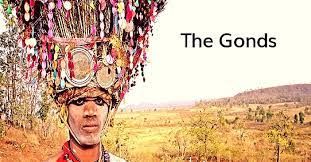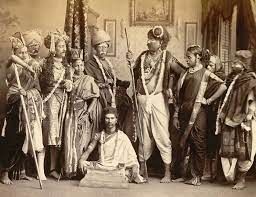- Books Name
- Social Science Book
- Publication
- Cognizance Publication
- Course
- CBSE Class 7
- Subject
- Social Science
Changing society
New Castes,Hierachies and Jatis
As the economy and the needs of society grew, people with new skills were required.Smaller castes, or jatis, emerged within varnas.Social groups were taken into caste based society and given the status of Jatis.Specializedartisan-smiths, carpenters and masons were also recognised as separate jatis by the Brahmanas. Jatis rather than varna, became the basis for organising society. Among the Kshatriyas, new Rajput clans became powerful by the 11th and 12th centuries.They belonged to different lineages, such as Hunas, Chandelas, Chalukyas and others. Many of these clans came to be regarded as Rajputs. They replace the older rulers specially in agricultural areas.With the support of Brahmanas, many tribes became part of the caste system.But only the leading tribal families could join the ruling class.A large majority join the lower jatis of caste society.On the other hand, many dominant tribes of Punjab, Sind and North-West Frontier had adopted Islam quite early.They continued to reject the caste system.
Deliberations on jati
The 12th century inscription from Uyyankondan Udaiyar, in Tiruchirappalli taluka (Tamil nadu), describe the deliberation in a Sabha of Brahmans. They deliberated on the status of a group known as rathakar( chariot makers). They laid down their occupation, which was to include architecture, building coaches and chariots, erecting gateways for temples with images in them, preparing wooden equipments used to perform sacrifices.Building mandapas, making jewels for the king.
The Gonds

The Gonds lived in a vast forested region called Gondwana-‘country inhabited by Gonds’.They practiced shifting cultivation.The large Gond tribe was further divided into many smaller clans.Each clan has its own raja aur rai. The Akbar Nama, a history of Akbar's reign, mentioned the Gond Kingdom of Garha Katanga that has 70,000 villages.The administrative system of these Kingdom was becoming centralised.Kingdom was divided into garhs.Each garch was controlled by a particular Gond clan. This was further divided into units of 84 villages calledchaurasi. The chaurasi was subdivided into barhots which was made up of 12 villages.Large state change the nature of Gond society as equal society. Gradually got divided into unequal social classes.Brahmanas received land grants from the Gond rajas and became more influential.The Gond chiefs now wished to be recognised as Rajputs.
Gara Katanga was a rich state. It earned wealth by trapping and exporting wild elephants to other kingdoms. When the Mughals defeated the Gonds.Theyannexed part of the Kingdom and granted the rest to Chandra Shah. Despite the fall of Garha Katanga, the Gondkingdoms survived for sometime. They become much weaker and later struggled unsuccessfully against the stronger Bundelas and Marathas.
The Ahoms

The Ahoms migrated to the Brahmaputra valley from present day Myanmar in the 13th century.They created a new state by suppressing the older political system of the bhuiyans(landlords).During the 16th century they annexed the kingdoms ofChuttiyas(1523)and of Koch-Hajo(1581) and subjugated many other tribes.The Ahoms built a large state using firearms as early as the 1530s.By 1660s, they could make high quality gunpowder and cannons.In 1662,they were defeated by the Mughals, but Mughal control could not last long.The Ahom statedepended upon forced labour.Those forced to work for the state work called paiks. A census of the population was taken. Each village has to send a number of paiks by rotation.People from heavily populated areas was shifted to less populated places. Ahom society was divided into clans or khels.Almost all adult male served in the army during war. At other times, they were engaged in building dams, irrigation system and other public works.The Ahoms also introduced new methods of rice cultivation. The Ahoms worship their own tribal gods.In the reign of Sib Singh(1714-1744)), Hinduism became the predominant religion.But the Ahom kings did not completely give up their traditional beliefs after adopting Hinduism.Ahom society was very sophisticated. Poets and scholars were given land grants. Theatre was encouraged. Important works of Sanskrit were translated into the local language.Historical works, known as Buranjis were also written- first in the Ahom language and then in Assamese.

 Cognizance Publication
Cognizance Publication
